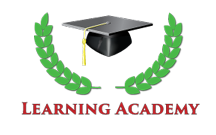
- Description
- Objectives
- Outline
- Materials
- System Requirements
- Watch a Demo
Are you good with computing numbers and analyzing financial data? Whether you dream of working for a large company or envision owning your own business, accountants are in demand. Our Principles of Accounting Level 1 course provides students with the opportunity to explore basic accounting systems, processes, and the resulting financial statements. Additionally, you will closely examine accounting rules, procedures, and controls that are applicable to cash, merchandising, and adjustments. Our course provides a thorough introduction to financial accounting and the responsibilities one should be prepared for in the world of accounting.
Prerequisite(s): None
After completing this course, you should be able to:
- Identify the conceptual underpinnings of accounting
- Recall the features, tools, and methods used to enhance and improve accounting systems and processes
- Define the basics of financial statements and the accounting cycle
- Recognize the fundamentals of merchandising transactions and inventory systems
- Describe the role of internal controls and aspects of fraud in the workplace
Principles of Accounting Level 1 Module 1
Role of Accounting in Society
- Difference Between Financial and Managerial Accounting
- Users of Accounting Information
- Typical Accounting Information
- Identifying, Recording, and Reporting
- Importance to Business Stakeholders
Principles of Accounting Level 1 Module 2
Introduction to Financial Statements
- Income Statement
- Owner’s Equity
- Balance Sheet
- Cash Flows
- Current and Noncurrent Assets
- Current and Noncurrent Liabilities
- Revenues
- Expenses
Principles of Accounting Level 1 Module 3
Analyzing and Recording Transactions
- Financial Statements
- Expanded Accounting Equation
- Analyzing Transactions
- Recording Transactions
- T-Accounts
- Trial Balance
Principles of Accounting Level 1 Module 4
The Adjustment Process
- Concepts Affecting Adjusting Entries
- The Need for Adjusting Entries
- Types of Adjusting Entries
- Ledger Balances
- Accruals
- Adjusted Trial Balance
Principles of Accounting Level 1 Module 5
Completing the Accounting Cycle
- Closing Entries
- Journaling and Posting Closing Entries
- Post-Closing Trial Balance
- Cash Basis vs. Accrual Basis Accounting
- The Classified Balance Sheet
- Evaluating Liquidity
Principles of Accounting Level 1 Module 6
Merchandising Transactions
- Merchandising Transactions vs. Service Transactions
- Characteristics of Merchandising Transactions
- Characteristics of Sales Transactions
- Characteristics of Perpetual and Periodic Inventory Systems
- Pros and Cons of Inventory Systems
- Purchase Transaction Journal Entries
- Sales Transaction Journal Entries
- Freight-In Methods
Principles of Accounting Level 1 Module 7
Accounting Information Systems
- Manual and Computerized Accounting Information Systems
- Inputting/Entering Data
- Processing Data
- Output: Presenting Information
- Storing Data
- Special Journals and Importance to Stakeholders
- Subsidiary Ledgers
Principles of Accounting Level 1 Module 8
Fraud, Internal Controls, and Cash
- Analyze Fraud in the Accounting Workplace
- The Role of Internal Controls
- Sarbanes-Oxley Act
- Internal Controls within an Organization
- Petty Cash Fund
- Preparing Petty Cash Journal Entries
- Management Responsibilities for Maintaining Internal Controls
- Bank Reconciliation
- Fraud in Financial Statements
**Outlines are subject to change, as courses and materials are updated.**
Ed4Career is committed to being both environmentally conscious and making it easier for you to study! We’re making your education mobile! All of our textbooks are now provided as eTextbooks. You can access them on your laptop, tablet, or mobile device and can study anytime, anywhere.
The move away from physical books to eTextbooks means you get the latest, most up-to-date version available. This also makes your training more accessible, so you can study anywhere you have your phone or tablet. The best part is that all materials are included in your training cost so there are NO extra fees for books!
Internet Connection
- Broadband or High-Speed - DSL, Cable, and Wireless Connections
*Dial-Up internet connections will result in a diminished online experience. Classroom pages may load slowly and viewing large audio and video files may not be possible.
Hardware Requirements
- Processor - 2GHz Processor or Higher
- Memory - 1 GB RAM Minimum Recommended
PC Software Requirements
- Operating Systems - Windows 7 or higher
- Microsoft Office 2013 or higher. Also, you could use a general Word Processing application to save and open Microsoft Office formats (.doc, .docx, .xls, .xlsx, .ppt, .pptx)
- Internet Browsers - Google Chrome is highly recommended
- Cookies MUST be enabled
- Pop-ups MUST be allowed (Pop-up Blocker disabled)
- The Kindle Reader App or VitalSource Bookshelf App are needed for many of our courses (No special equipment needed. This can be downloaded for FREE onto your computer.)
- PowerPoint Viewer (if you do not have PowerPoint)
- Adobe PDF Reader
- QuickTime, Windows Media Player &/or Real Player
MAC Software Requirements
- Operating Systems - Mac OS x 10 or higher with Windows
- Mac office programs or a Word Processing application to save and open Microsoft Office formats (.doc, .docx, .xls, .xlsx, .ppt, .pptx)
- Internet Browsers- Google Chrome is highly recommended
- Cookies MUST be enabled
- Pop-ups MUST be allowed (Pop-up Blocker disabled)
- The Kindle Reader App or VitalSource Bookshelf App are needed for many of our courses (No special equipment needed. This can be downloaded for FREE onto your computer.)
- PowerPoint Viewer (if you do not have PowerPoint)
- Adobe PDF Reader
- Apple QuickTime Media Player


